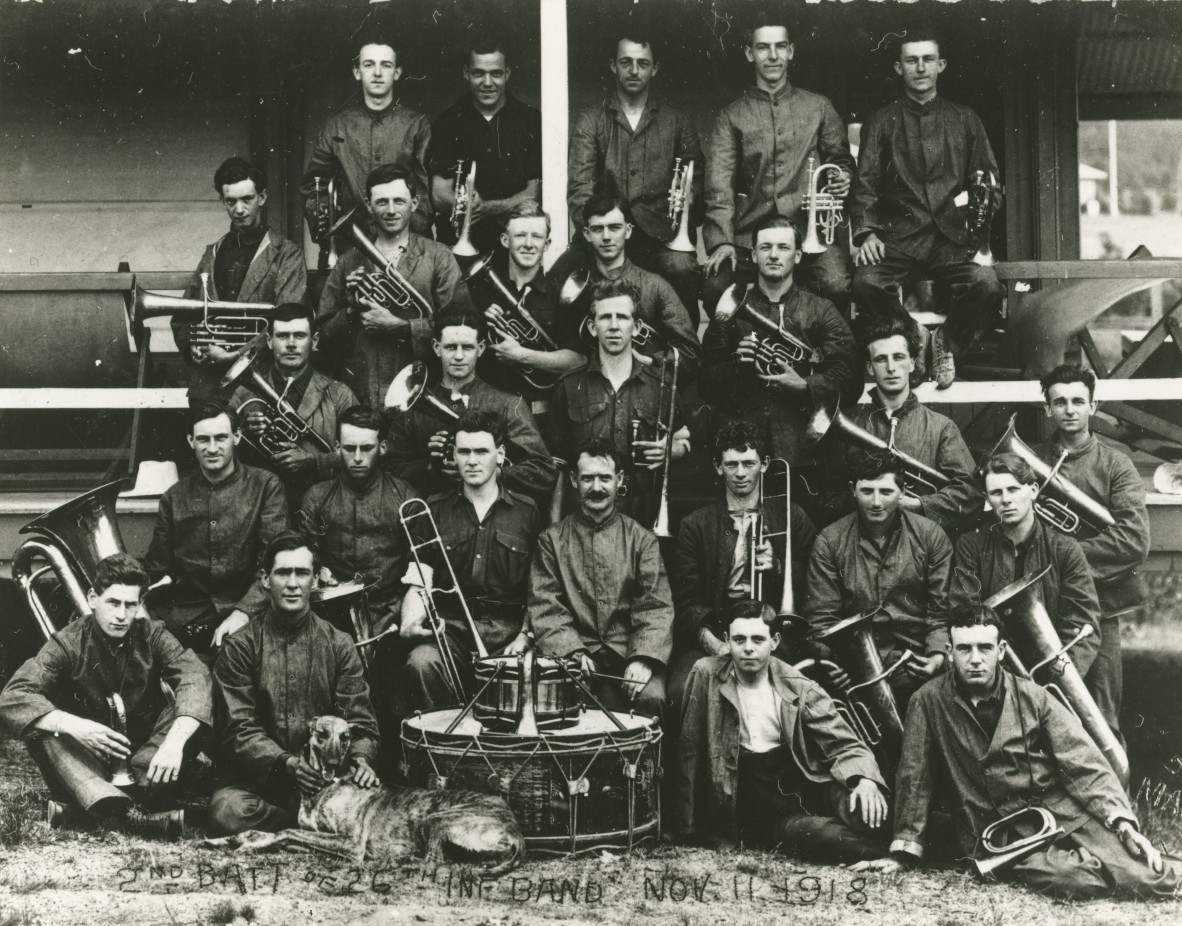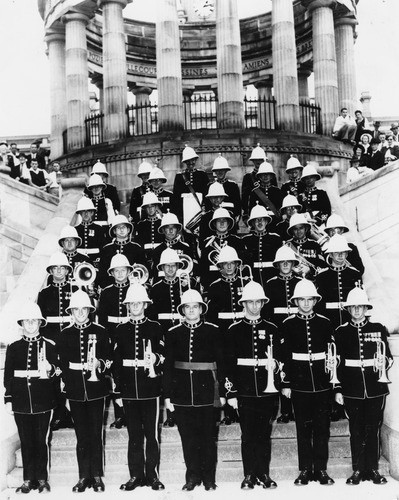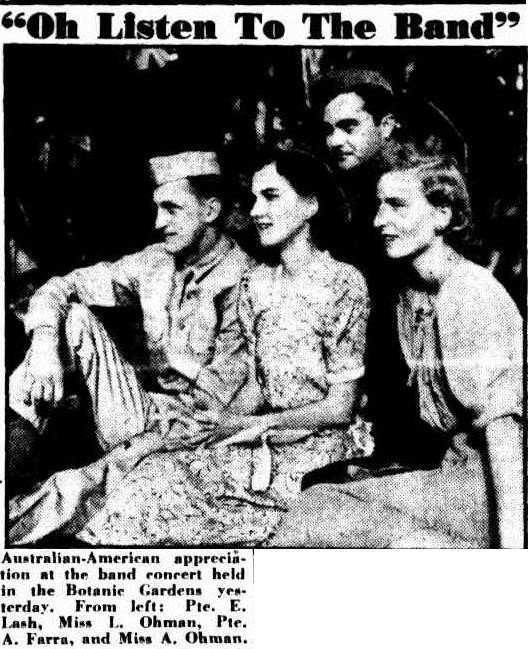Defence Force Bands and the Development of Jazz in Queensland
By JOL Admin | 8 October 2018
Guest Blogger - Dr Lauren Istvandity, 2017 John Oxley Library Fellow.
What do the defence forces and our local jazz scene have in common? Musicians, of course! In decades past, Australian Defence Force bands have played a key role in sustaining the jazz scene in Queensland, while the locally-trained musicians upheld the Queensland-based bands which were considered the best in the country during the 1950s, 60s, and 70s.
Musicians have been integral to armed forces for centuries, where music is used to accompany troop movement and ceremonies, and for entertainment and public relations.
In Australia, records show military style bands were first incorporated into the Australian Army and Royal Australian Navy as early as the late-1880s, and were later staple units of the Royal Australian Air Force and Citizen Military Forces (now known as Army Reserve). These bands figured highly in the services of Australian troops in the First and Second World Wars, often made up of highly trained musicians raised from the ranks. Those with proficiency on at least one instrument were often trained to play others to fill ensemble gaps. These men were additionally trained as medics or stretcher-bearers in wartime.

2nd Battalion 26th Infantry Band at the Enoggera army barracks on Armistice Day, Queensland, 1918. John Oxley Library, State Library of Queensland. Image # 28846-0001-0001
Like other personnel, members of the Defence Force bands remain in practice outside of wartime. With the formation of the Australian Regular Army in 1947, bands were raised in each of the five core commands and by 1955 there were 12 bands in total, in addition to other defence force bands. The foremost of these bands was the Northern Command Band of the Australian Army, based in Townsville (see image). Most bands followed a traditional military brass band formation, until the Royal Australian Airforce Band took up the concert band format with the addition of woodwind instruments in 1952, a model replicated by local community bands at this time.

Northern Command Band at the Shrine of Remembrance in Anzac Square Brisbane Queensland 1955. John Oxley Library, State Library of Queensland. Image # 28846-0001-0003
But what does this have to do with jazz? Despite the fact that most defence force bands continued to play traditional repertoire until relatively recently, the high levels of musicianship and discipline paired with a similarity in instrumentation meant that musicians within, or recently out of the service, would frequently sit in with local jazz bands in their downtime. Musicians within the defence forces were not necessarily trained in jazz but took easily to interpreting charts and the challenges of improvisation.
In fact, some jazz scenes in Queensland, particularly those in 1970s North Queensland, came to rely heavily on defence force musicians to make up ensembles and lift the standard of jazz that could be performed. This included musicians in the Citizen Military Forces, who often played in, and sometimes lead, community jazz bands.
A significant precursor to this trend can be traced back to World War Two, when US defence forces were stationed in both Brisbane and Townsville. They brought with them the US Army Band, who played repertoire of military, swing and jazz music at the highest musical standards (see image). Anecdotally, local jazz musicians took opportunities to sit-in or jam with the US musicians, who also brought with them the latest jazz records which would otherwise take months to become available in Australia.

Oh Listen to the Band, Courier-Mail (Brisbane, Qld.) , Monday 4 May 1942, page 5
After World War Two, musician numbers dwindled and numbers were bolstered by the introduction of the practice of enlisting troops specifically as bandsmen. Crucially, after 1947 the Australian Army began to train their musicians within Apprentice Schools, the task of which would eventually be taken up within the current Defence Force School of Music (established 1984). This training filled a considerable gap in music education infrastructure and further contributed to the high standard of players filtering into Queensland’s jazz scenes. Today, defence force bands retain some of the best musicians in the country, and work across a range of genres from traditional military themes to contemporary and, of course, jazz.
Comments
Your email address will not be published.
We welcome relevant, respectful comments.